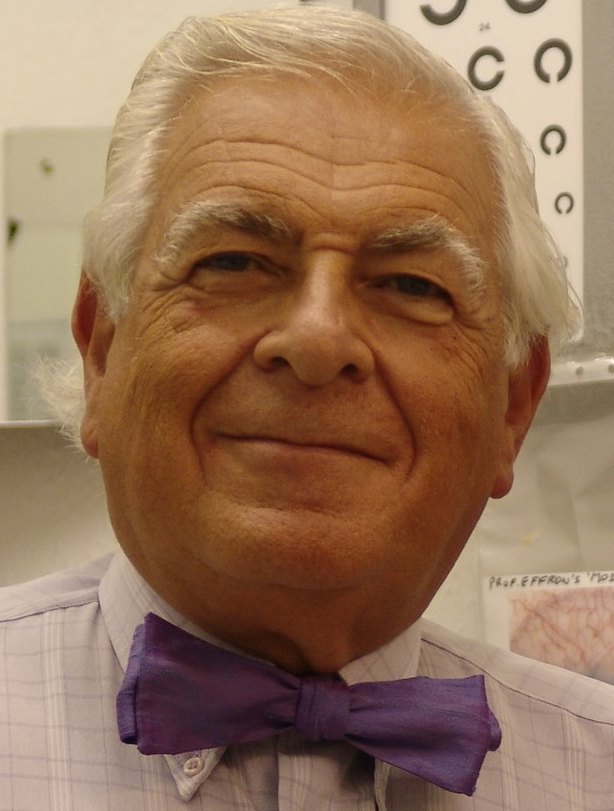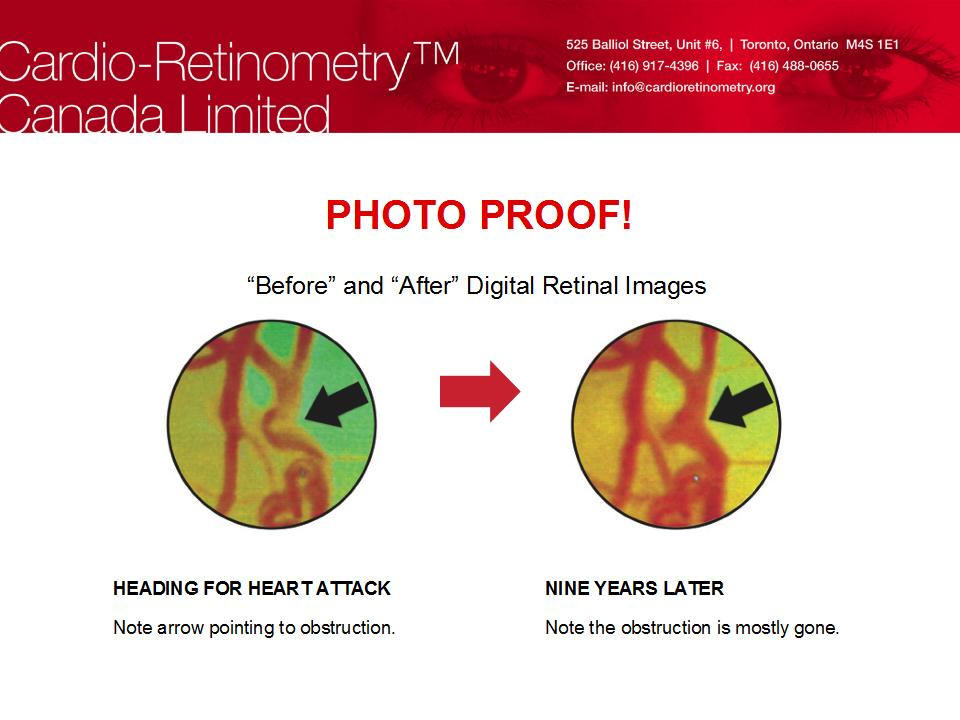I have to agree with Dr Clarke at my old medical school, but my
excuse is that I considered it so obvious that the images had been
transposed that it was unworthy of comment.
As to lack of ability to differentiate between retinal arterioles
and venules I must agree that the difference should be apparent to
anyone with 6/60 in this case.
What I find noteworthy however is the degree of retinal atheroma
in these images which has passed without comment. The non-surgical
reversal of such atheroma by nutritional prophylactic
cardioretinometry (NPCRet) is not difficult. I should also
anticipate some improvements and restoration of the lumen in such
cases with NPCRet.
In my letter of 23rd July I redefined scurvy as "Any state in
which supplementary vitamin C improves the pericorneal vasculature."
and this has passed without challenge. I should hasten to add that
because scurvy exists in two forms, ephemeral and - more difficult
to spot - chronic subclinical, this definition only applies to the
most obvious which is the ephemeral form. Approximately ninety free
radical diseases are now thought to be rooted in Chronic Subclinical
Scurvy although Denham Harman, whose modesty is inversely
proportional to the importance of his so fundamental free radical
theory, never made a great point of this after fathering the Free
Radical Theory of Aging and Disease an astonishing fifty years ago
this month. Indeed, that he is still waiting for a Nobel Prize is
most curious.
Because it is so difficult to diagnose, chronic subclinical
scurvy is perhaps, best defined as "That state in which retinal
atheroma can be proven by sequential imaging to be improved by
Nutritional Prophylactic CardioRetinometry (NPCRet)."
I have not carried out any serious veterinary ophthalmological
research but would welcome comments on the relative state of the
retinal vessels in animals that, perhaps, like the goat, are said to
produce up to 100 grams of vitamin C endogenously/day. I doubt there
is any cholesterol visible in their arteries until they become old
and feeble. The mouse eye is frustratingly small as a model that,
tantalisingly, produces up to 20 grams/day in 70Kg terms. This
animal would be interesting for it produces so much ascorbate as to
be immune to the Sterne strain of respiratory anthrax.
As I stated in July; Chronic Unbalanced Circadian Atheroma is
advanced as the principal aetiological factor in coronary heart
disease. It is diagnosable from the retinal atheroma and any subject
in the Wong presentation to whom the fundii belong, would be very
suitable for NPCRet in its therapeutic form. Such cases (and I have
many hundreds of such images) often belong to people with low to
normal cholesterol levels for whom statins are irrelevant. Sadly, my
invitations to their medical practitioners to cooperate in NPCRet
are largely ignored.
Competing interests: AntiCoronary Clinics (UK) Ltd
 Dr.
Bush is an optometrist who discovered that the eyes are not only the window to
the heart, but they can be used to monitor reversal of heart disease. He (as
have many other eye doctors) has been able to measure the progression of heart
disease in the retinal arteries. It is generally accepted by the medical
profession that the atherosclerosis eye doctors observe in their patients cannot
be reversed. It is medical dogma that arterial plaques always get worse. Dr.
Bush discovered that these plaques can be made to go away quite easily! After
Dr. Bush saw that it can and was being reversed in his patients on high vitamin
C and other nutrients (The so-called Pauling therapy), he became intrigued,
informed and tried to spread the word in Britain. He was amazed by the
resistance of the medical profession, National Health Service, etc. Just like
Linus Pauling before him, Bush hit a brick wall of disbelief and suppression.
Dr. Bush's new book is a product of his studies into vitamin C. It is meant to
expose the wealth of knowledge about vitamin C that science has uncovered, but
that has been deliberately kept from the medical profession. Aimed at his fellow
optometrists, but if you know someone who thrives on trivia, then 700 Vitamin C
Secrets is for them! (Really 1600 tidbits!)
Dr.
Bush is an optometrist who discovered that the eyes are not only the window to
the heart, but they can be used to monitor reversal of heart disease. He (as
have many other eye doctors) has been able to measure the progression of heart
disease in the retinal arteries. It is generally accepted by the medical
profession that the atherosclerosis eye doctors observe in their patients cannot
be reversed. It is medical dogma that arterial plaques always get worse. Dr.
Bush discovered that these plaques can be made to go away quite easily! After
Dr. Bush saw that it can and was being reversed in his patients on high vitamin
C and other nutrients (The so-called Pauling therapy), he became intrigued,
informed and tried to spread the word in Britain. He was amazed by the
resistance of the medical profession, National Health Service, etc. Just like
Linus Pauling before him, Bush hit a brick wall of disbelief and suppression.
Dr. Bush's new book is a product of his studies into vitamin C. It is meant to
expose the wealth of knowledge about vitamin C that science has uncovered, but
that has been deliberately kept from the medical profession. Aimed at his fellow
optometrists, but if you know someone who thrives on trivia, then 700 Vitamin C
Secrets is for them! (Really 1600 tidbits!) 